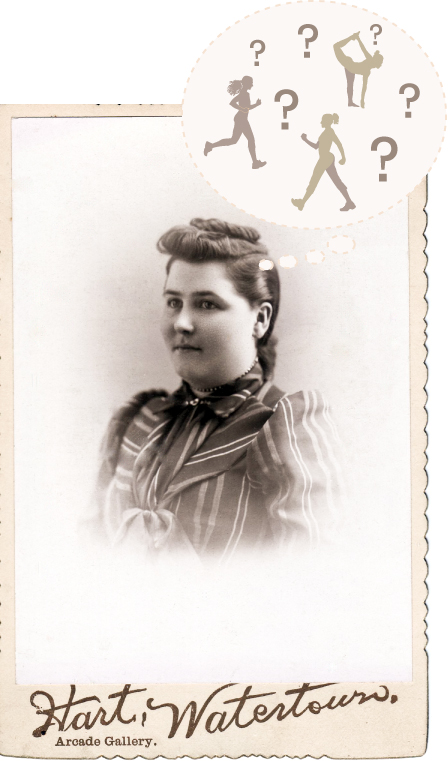Mathematical Fitness Advice
If you’re returning to exercise after an absence of several weeks/months, you probably need some encouragement. I know, because it happened to me awhile back and I was distressed with my body’s weakness. Naturally, I whined to my instructors. The best advice I got was that muscles have memory and have the ability to quickly return to their previously-fit condition, so long as I continue doing the necessary workouts to remind them how big and strong they used to be. This did wonders for my morale, and I kept at it, and it turned out to be oh-so-true.
If you’re embarking on an exercise program from ground-zero, and you’re like me and countless others, I’m betting that ‘losing weight’ is your main impetus to start exercising. However, while inactivity does contribute to weight gain, the connection between exercise and weight-loss is more indirect because of the dietary factor (meaning food, glorious food). So, if you’ve started exercising in earnest, but found that the pounds are not melting away, here’s some advice . . . A pound gained comes from ingesting 3500 calories (which really isn’t that much), and a pound lost is the result of burning off 3500 calories (which is A LOT of exercising added to our surprisingly meager resting metabolism).
It’s all just a matter of math. I used to think my body was somehow sabotaging me or some sinister outside force was at work. But then I tracked the in’s and out’s, which verified that it’s strictly math. I recommend using MyFitnessPal, which is a fantastic App for tracking daily food intake, exercise, and weight-loss. Also, I’ve never successfully lost weight without some ‘outside professional help’ — WeightWatchers in the 80’s and, since then, a personal nutritionist, Karen Kelley.
Meanwhile, cardio workouts are conducive to losing weight simply because you burn more calories for the time spent (again, math). You can supplement cardio exercise with weight-based workouts — a beginning exerciser should probably aim for an increased number of reps using a weight that is not too heavy (but not too light). For example, 20 reps, 3 sets, with good form.
Don’t overdo it at first — avoid becoming discouraged by an aching body. Ease into your new program, do lots of stretching, and get extra sleep to enable your body to recover.
Continue clicking on MoveGirlGO to get ideas to shorten your learning curve, avoiding pain (physical, mental, emotional), and get you going — faster, leaner, stronger.
[Img.Src: Young Woman, 1905]





Thank-you for sharing the numbers with us, LaFitterina – I especially appreciated the bit on 3500 calories, easy to gain, a pain in the butt to lose! Cheers.